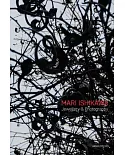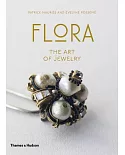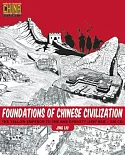The Ghysels collection of ethnic jewellers is one of the world's largest and most comprehensive. It is the culmination of passionate quest of over fourth years for aesthetic beauty and
authenticity. As such, it represents an invaluable repository of research, taste and discernment. We enthusiastically pursue our journey through the twists and turns of the Ghysels' wealth of
adornments. After having explored the universe of rings and earrings in two prior books in this series, we now have the pleasure of discovering the universe of bracelets. These mainly
unpublished braceletes--about 1200 of them--have been chosen piece by piece with great love and exquisite taste. They form a group of exceptional quality that displays a great variety of forms.
The creativity of Colette Ghysels' layouts and the quality of Mauro Magliani's photographs add to our visual pleasure.
From the standpoint of their shapes, many ethnic bracelets straddle the border area between two worlds: that of prehistory, where the traditions of some ethnic groups have been kept alive into
the 20th century, and that of jewelry created by contemporary artists.
Just as with rings and earrings, bracelets and anklets punctuate the phases of one's life. Small rings, which tinkle with the least movement, preserve children from evil spirits in the Near
East. All self-respecting Jewish brides from Sana'a wear several pairs of bracelets with gossamer filigree. In order to ensure abundant progeny, A Bengal bride will be given a bracelet made
from a shell. A flat ivory bracelet rewards a Sudanese elephant hunter of the Dinka tribe for his bravery. And, when undertaking their final journal, both men and women surround themselves one
last time with bracelets, such as the jade ones found in Chinese tombs.
the author guides us on a continent-by-continent tour, explaining the historic and cultural contexts in which these ethnic bracelets originated. Captions inform us of materials, dimensions and
uses. A glossary of technical terms, maps and an index round off the descriptive information.
The Ghysels collection of ethnic jewellers is one of the world's largest and most comprehensive. It is the culmination of passionate quest of over fourth years for aesthetic beauty and
authenticity. As such, it represents an invaluable repository of research, taste and discernment. We enthusiastically pursue our journey through the twists and turns of the Ghysels' wealth of
adornments. After having explored the universe of rings and earrings in two prior books in this series, we now have the pleasure of discovering the universe of bracelets. These mainly
unpublished braceletes--about 1200 of them--have been chosen piece by piece with great love and exquisite taste. They form a group of exceptional quality that displays a great variety of
forms. The creativity of Colette Ghysels' layouts and the quality of Mauro Magliani's photographs add to our visual pleasure.
From the standpoint of their shapes, many ethnic bracelets straddle the border area between two worlds: that of prehistory, where the traditions of some ethnic groups have been kept alive
into the 20th century, and that of jewelry created by contemporary artists.
Just as with rings and earrings, bracelets and anklets punctuate the phases of one's life. Small rings, which tinkle with the least movement, preserve children from evil spirits in the Near
East. All self-respecting Jewish brides from Sana'a wear several pairs of bracelets with gossamer filigree. In order to ensure abundant progeny, A Bengal bride will be given a bracelet made
from a shell. A flat ivory bracelet rewards a Sudanese elephant hunter of the Dinka tribe for his bravery. And, when undertaking their final journal, both men and women surround themselves
one last time with bracelets, such as the jade ones found in Chinese tombs.
the author guides us on a continent-by-continent tour, explaining the historic and cultural contexts in which these ethnic bracelets originated. Captions inform us of materials, dimensions
and uses. A glossary of technical terms, maps and an index round off the descriptive information.





















